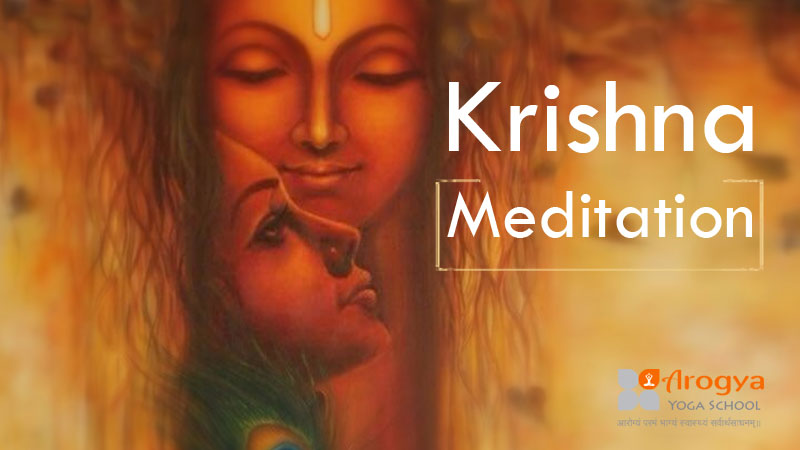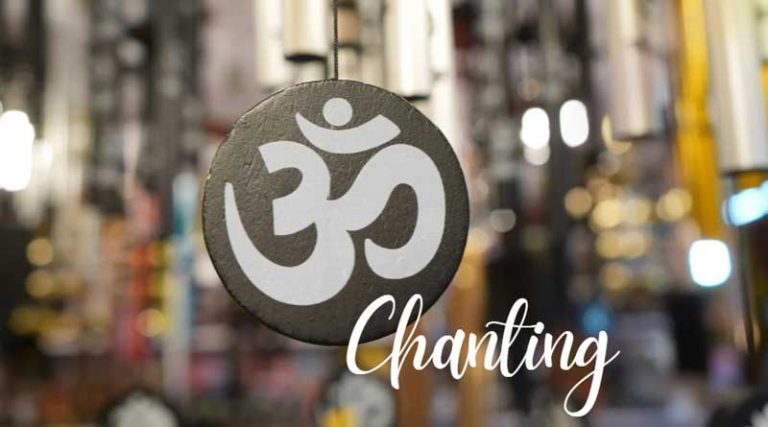
In India there are sacred places where Yogis go to meditate in solitude, as prescribed in Bhagavad-gītā. Traditionally, yoga cannot be executed in a public place, but insofar as kīrtana-mantra-yoga, or the yoga of chanting the Hare krishna mantra: Hare krishna, Hare krishna, krishna krishna, Hare Hare/Hare Rāma, Hare Rāma, Rāma Rāma, Hare Hare—is concerned, the more people present, the better. When Lord Caitanya Mahāprabhu was performing kīrtana in India some five hundred years ago, He organized in each group sixteen people to lead the chanting, and thousands of people chanted with them. This participation in kīrtana, in the public chanting of the names and glories of God, is very possible and is actually easy in this age; but as far as the meditational process of yoga is concerned, that is very difficult. It is specifically stated in Bhagavad-gītā that to perform meditational yoga one should go to a secluded and holy place. In other words, it is necessary to leave home. In this age of overpopulation it is not always possible to find a secluded place, but this is not necessary in bhakti-yoga.
In the bhakti-yoga system there are nine different processes: hearing,chanting, remembering, serving, worshiping the Deity in the temple, praying, carrying out orders, serving krishna as friend and sacrificing for Him. Out of these, śravaṇaṁ kīrtanam, hearing and chanting, are considered the most important. At a public kīrtana one person can chant Hare krishna, Hare krishna, krishna krishna, Hare Hare/ Hare Rāma, Hare Rāma, Rāma Rāma, Hare Hare, while a group listens, and at the end of the mantra, the group can respond, and in this way there is a reciprocation of hearing and chanting. This can easily be performed in one’s own home, with a small group of friends or with many people in a large public place. One may attempt to practice meditational yoga in a large city or in a society, but one must understand that this is one’s own concoction and is not the method recommended in Bhagavad-gītā.
The whole process of the yoga system is to purify oneself. And what is this purification? Purification ensues upon the realization of one’s actual identity. Purification is realizing that “I am pure spirit—I am not this matter.” Due to material contact, we are identifying ourselves with matter, and we are thinking, “I am this body.” But in order to perform real yoga one must realize his constitutional position as being distinct from matter. The purpose of seeking out a secluded place and executing the meditational process is to come to this understanding. It is not possible to come to this understanding if one executes the process improperly. In any case, this is the consideration of Lord Caitanya Mahāprabhu:
harer nāma harer nāma
harer nāmaiva kevalam
kalau nāsty eva nāsty eva
nāsty eva gatir anyathā
“In this age of quarrel and disagreement [Kali-yuga], there is no other way of spiritual realization but this chanting of the names. There is no other way, there is no other way, there is no other way.”
It is generally thought, at least in the Western world, that the yoga system involves meditating on the void. But the Vedic literatures do not recommend meditating on any void. Rather, the Vedas maintain that yoga means meditation on Viṣṇu, and this is also maintained in Bhagavad-gītā. In many yoga societies we find that people sit cross-legged and very straight, then close their eyes to meditate, and so fifty percent of them go to sleep because when we close our eyes and have no subject matter for contemplation, we simply go to sleep. Of course this is not recommended by Śrī krishna in Bhagavad-gītā.
One must sit very straight, and the eyes be only half-closed, gazing at the tip of one’s nose. If one does not follow the instructions, the result will be sleep and nothing more. Sometimes, of course, meditation goes on when one is sleeping,
but this is not the recommended process for the execution of yoga. Thus to keep oneself awake krishna advises that one always keep the tip of the nose visible. In addition, one must be always undisturbed. If the mind is agitated, or if there is a great deal of activity going on, one will not be able to concentrate. In meditational yoga one must also be devoid of fear. There is no question of fear when one enters spiritual life. And one must also be brahmacārī, completely free from sex life. Nor can there be any demands on one meditating in this way. When there are no demands, and one executes this system
properly, then he can control his mind. After one has met all the requirements for meditation, he must transfer his whole thought to krishna, or Viṣṇu. It is not that one is to transfer his thought to vacancy. Thus krishna says that one absorbed in the meditational yoga system is “always thinking of Me.” The yogī obviously has to go through a great deal of difficulty to purify the ātmā (mind, body and soul), but it is a fact that this can be done most effectively in this age simply by the chanting of Hare krishna, Hare krishna, krishna krishna, Hare Hare/Hare Rāma, Hare Rāma, Rāma Rāma, Hare Hare.
Why is this? Because this transcendental sound vibration is nondifferent from krishna. When we chant His name with devotion, then krishna is with us, and when krishna is with us, then what is the possibility of remaining impure? Consequently, one absorbed in krishna consciousness, in chanting the names of krishna and serving Him always, receives the benefit of the highest form of yoga. The advantage is that he doesn’t have to take all the trouble of the meditational process. That is the beauty of krishna consciousness.








